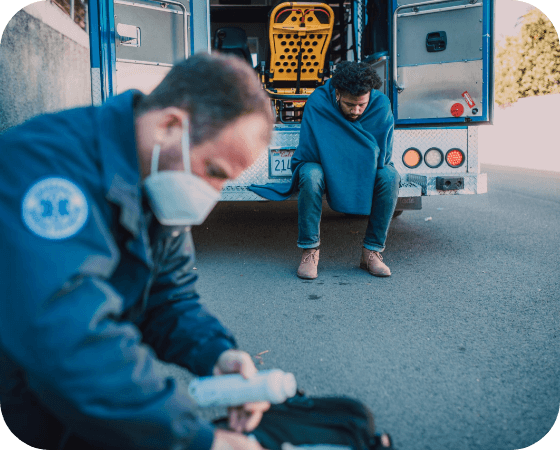Military servicemembers have stepped up throughout the course of the COVID-19 pandemic to care for a surge in patients, administer tests, and provide vaccinations. Meanwhile, civilian health care professions like nurses and paramedics are facing severe workforce shortages for the foreseeable future. Therefore, it begs to ask the question: could military medical personnel transition to the civilian world to help address gaps in the health care workforce?
Military medical personnel, in brief: The US armed forces have over 73,000 enlisted medical personnel, including Army and Air Force medics and Navy corpsmen. All medics and corpsmen receive three months of specialized medical training and have continuing education requirement throughout their enlistment. Medics and corpsmen who specialize in physical therapy, dental care, radiology, and other specialties are required to complete additional training that can last up to one year.
The issue – civilian shortages: Nearly all health care professions face staffing shortages that have been exacerbated by the COVID-19 pandemic. As an example, the American Hospital Association (AHA) estimates that the US needs more than 200,000 new nurses each year to keep up with a rising population of seniors and replace nurses existing currently in the workforce. Emergency medical services (EMS) agencies across the nation are also struggling to fill positions for emergency medical technicians (EMTs) and paramedics.
Let’s jump into the discussion – can former medics and corpsmen be a solution to the care health care workforce shortage? The closest equivalent civilian jobs where medics and corpsmen can apply their skills are as EMTs and paramedics, but many veterans find the transition challenging due to a lack of accreditation standards.
- State EMS agencies have requirements that returning service members have difficulty meeting, like paying fees or undergoing background checks. Some states have particularly onerous requirements, like requiring sponsorship from an EMS office before granting a license.
- EMT certification usually has college coursework requirements, but many colleges don’t know how to interpret training and experience from military transcripts, meaning veterans usually have to spend time and money on repeat coursework.
Possible fixes: To help transition veterans into the health care workforce, specifically as EMTs or paramedics, advocates are calling on state EMT agencies to develop policies to apply military experience to licensing standards. The Army has also been requiring its medics in recent years to maintain a National Registry of Emergency Medical Technicians (NREMT) certification, which can ease the transition to becoming a civilian EMT. Furthermore, pilot programs such as program that the Lansing Community College currently offers, which provides specialized training for former enlisted military medical personnel who wish to become paramedics, could serve as a national model for similar programs.

